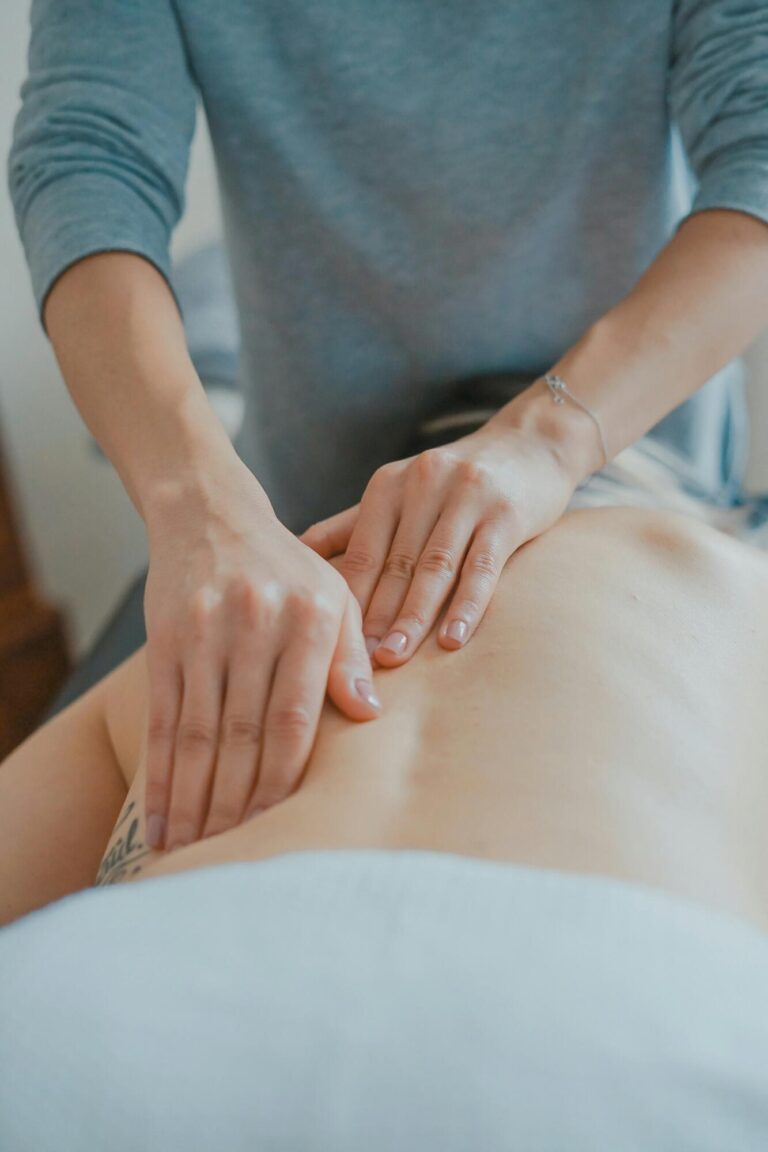Preventing Tailor’s Bunion: Best Practices for Healthy Feet
Welcome to our blog post on preventing tailor’s bunion, where we’ll explore the best practices for maintaining healthy feet. Whether you’re a fashionista who loves strutting in stylish shoes or someone who spends long hours on their feet, understanding and taking care of your foot health is crucial. Tailor’s bunion, also known as a bunionette, is a common condition that can cause discomfort and affect your daily activities. But fear not! With the right knowledge and preventive measures, you can keep those pesky bunions at bay and continue to put your best foot forward. So let’s dive in and learn more about this condition and how to take proactive steps towards healthier feet!
Understanding Tailor’s Bunion
Tailor’s bunion, also known as a bunionette, is a painful enlargement and inflammation of the fifth metatarsal bone at the base of the little toe. It gets its name from tailors who used to sit cross-legged for long hours, putting pressure on this area. The condition causes the little toe to bend inward towards the other toes, leading to discomfort and difficulty in finding appropriate footwear.
The most common signs of tailor’s bunion include redness, swelling, and pain at the base of your little toe. You may experience tenderness when wearing shoes or walking barefoot. Corns or calluses can also develop over time due to constant friction between your foot and ill-fitting shoes. If you notice any of these symptoms persisting or worsening, it’s important to seek professional advice for an accurate diagnosis and tailored treatment plan. Understanding these signs will help you take timely action towards healthier feet!
What is Tailor’s Bunion?
Tailor’s bunion, also known as bunionette, is a foot condition that affects the joint at the base of the little toe. It is characterized by a painful bump on the outside of the foot, which can become red and swollen. This condition gets its name from tailors who used to sit cross-legged for long periods, putting pressure on this area of their feet.
The main cause of tailor’s bunion is an abnormality in foot structure or mechanics. This can be genetic or due to wearing tight shoes that squeeze the toes together over time. The constant pressure and friction irritate the joint, leading to inflammation and pain. If you suspect you have tailor’s bunion, it’s essential to seek professional diagnosis and explore treatment options to alleviate discomfort and prevent further progression of the condition.
Signs and Symptoms of Tailor’s Bunion
The first indication that you may be dealing with a tailor’s bunion is the appearance of a bump on the outside of your foot, specifically at the base of your little toe. This bump can be red, swollen, and painful to touch. Additionally, you might notice that your little toe starts to deviate towards your other toes, causing it to overlap or even push against them.
As the condition progresses, you may experience discomfort while wearing shoes that put pressure on the affected area. Walking or standing for extended periods can also exacerbate the pain. It’s important not to ignore these symptoms as early intervention can prevent further complications down the line.
Causes of Tailor’s Bunion
Tailor’s bunion, also known as a bunionette, can be an uncomfortable and sometimes painful condition. But what causes this foot deformity? There are several factors that contribute to the development of a tailor’s bunion.
One common cause is genetics. If you have a family history of bunions or other foot deformities, you may be more likely to develop a tailor’s bunion. Additionally, wearing tight or narrow shoes can put pressure on the side of the foot and lead to the formation of a bony protrusion. This is especially true if you consistently wear ill-fitting footwear for extended periods.
Another potential cause is improper foot mechanics. If your feet pronate (roll inward) excessively when walking or running, it can alter the alignment of your bones and joints, leading to the development of bunions over time. It’s important to address any biomechanical issues with proper orthotic support or exercises to prevent tailor’s bunions from forming.
Diagnosing Tailor’s Bunion
Diagnosing tailor’s bunion involves recognizing the signs and symptoms associated with this condition. Look out for a prominent bump on the outside of your foot, near the base of your pinky toe. This bump may be red, swollen, and painful, especially when wearing tight shoes or walking for long periods.
If you suspect you have tailor’s bunion, it is important to seek professional diagnosis from a podiatrist or foot specialist. They will examine your feet and ask about your medical history to determine if you have this condition. X-rays may also be taken to assess any bone abnormalities that could contribute to the development of a tailor’s bunion.
How to Know If You Have Tailor’s Bunion
Do you experience pain and discomfort on the outside of your foot, specifically near your pinky toe? This could be a sign that you have a tailor’s bunion. Besides pain, other symptoms include redness, swelling, and the presence of a bump or callus at the base of your little toe.
If you notice any of these signs, it’s important to seek professional diagnosis from a podiatrist or foot specialist. They will conduct a thorough examination and may order imaging tests like X-rays to confirm the presence of a tailor’s bunion. Remember, early detection can lead to better treatment outcomes!
Seeking Professional Diagnosis
If you suspect that you have a tailor’s bunion, it is important to seek professional diagnosis. While self-diagnosis can provide some insight, only a healthcare professional can accurately determine if you have this condition. They will evaluate your symptoms and conduct a physical examination of your foot to make an accurate diagnosis.
A healthcare provider may also order imaging tests, such as X-rays or MRI scans, to get a better view of the affected area. These tests can help confirm the presence of a tailor’s bunion and assess its severity. Remember, early detection and proper diagnosis are key to effectively managing this condition and preventing further complications. So don’t hesitate to consult with a medical expert for an accurate assessment of your foot health.
Non-Surgical Treatment Options
Home remedies and non-surgical treatment methods can often provide relief for tailor’s bunion. There are several options to try at home, such as applying ice packs or cold compresses to reduce inflammation and pain. Over-the-counter pain medications can also help alleviate discomfort.
In addition to home remedies, there are nonsurgical treatment methods available. One common approach is the use of padding or cushioning devices that help protect the affected area from friction and pressure. Shoe modifications, such as wearing wider shoes or using shoe inserts, may also relieve symptoms by reducing pressure on the bunion. These conservative treatments can be effective in managing tailor’s bunion without resorting to surgery.
Home Remedies for Tailor’s Bunion
When it comes to finding relief for tailor’s bunion, there are several home remedies that can help alleviate pain and discomfort. One effective method is applying ice packs or cold compresses to the affected area for 10-15 minutes at a time, multiple times a day. This can help reduce inflammation and numb the area temporarily. Another remedy is using over-the-counter pain relievers like ibuprofen or acetaminophen to manage the pain associated with tailor’s bunion.
Additionally, wearing properly fitted shoes with wide toe boxes and avoiding high heels can provide much-needed relief. Toe spacers or orthotic inserts may also be helpful in reducing pressure on the affected joint. It’s important to note that while these remedies may offer temporary relief, they are not a substitute for professional medical advice. Therefore, it’s always recommended to consult with a healthcare provider for an accurate diagnosis and appropriate treatment plan tailored specifically to your needs.
Nonsurgical Treatment Methods
When it comes to treating tailor’s bunion, there are several nonsurgical options available that can help alleviate pain and prevent further progression of the condition. These methods are often recommended as a first line of treatment before considering surgery.
One approach is to try home remedies such as applying ice packs or using over-the-counter pain relievers to reduce inflammation and discomfort. Additionally, wearing shoe inserts or padding can provide cushioning and support for the affected area, reducing pressure on the bunion.
Surgical Treatment for Tailor’s Bunion
In some cases, non-surgical treatment methods may not provide sufficient relief for tailor’s bunion. This is when surgical intervention may be considered. Surgery for tailor’s bunion is typically recommended when conservative measures have failed to alleviate pain or correct the deformity.
en be performed to address a tailor’s bunion. The specific procedure chosen will depend on the severity of the condition and individual factors. Some common surgical techniques include removing a portion of the bone, realigning the bones in the foot, or fusing joints together. It is important to consult with a podiatrist or orthopedic surgeon who specializes in foot and ankle surgery to determine which approach is best suited for your unique situation.
When is Surgery Needed?
When is surgery needed for tailor’s bunion? While non-surgical treatments are often effective, there are cases where surgery may be necessary. One indication for surgery is persistent pain and discomfort that doesn’t improve with conservative measures. Additionally, if the deformity continues to worsen despite attempts at non-surgical treatment, surgical intervention may be recommended.
Another factor that can determine if surgery is needed is the impact on overall foot function. If the tailor’s bunion affects normal walking or causes instability in the foot, surgical correction might be considered. It’s important to note that every case is unique, so it’s crucial to consult with a healthcare professional who specializes in foot conditions to determine if and when surgery is necessary.
Surgical Procedures for Tailor’s Bunion
When non-surgical treatment methods fail to provide relief from the pain and discomfort caused by a tailor’s bunion, surgery may be necessary. The goal of surgical intervention is to correct the deformity and realign the bones in the foot.
During the procedure, a surgeon will make small incisions near the affected area to access and remove any bone spurs or excessive bone growth. They may also reposition or fuse together certain bones in order to restore proper alignment. After surgery, patients can expect a period of recovery with limited weight-bearing on the affected foot.
Preventive Measures for Tailor’s Bunion
Prevention is always better than cure, especially when it comes to foot problems like tailor’s bunion. Here are some simple yet effective preventive measures you can take to keep your feet healthy and avoid developing this painful condition.
Pay attention to your footwear choices. Opt for shoes that provide ample room for your toes to move freely and don’t put excessive pressure on the sides of your foot. Avoid narrow or pointed-toe shoes, as these can exacerbate the problem by squeezing the toes together. Instead, choose shoes with a wide toe box that allows your toes to spread out naturally.
In addition to proper shoe selection, it’s important to focus on strengthening the muscles in your feet and maintaining flexibility. Regular stretching exercises can help improve muscle strength and prevent imbalances that may contribute to tailor’s bunion formation. Incorporating exercises such as toe curls, ankle circles, and calf stretches into your daily routine can go a long way in keeping your feet healthy.
By following these simple preventive measures, you can reduce the risk of developing tailor’s bunion and enjoy healthier feet overall! Remember, taking care of your feet should be a priority in order to maintain an active and pain-free lifestyle.
Tips for Avoiding Tailor’s Bunion
When it comes to preventing tailor’s bunion, there are a few simple tips you can follow to keep your feet happy and healthy. First and foremost, choosing the right footwear is crucial. Opt for shoes that provide ample room in the toe box and avoid narrow or tight-fitting styles that squeeze your toes together. Additionally, wearing supportive shoes with proper arch support can help distribute pressure evenly across your feet.
In addition to proper shoe selection, strengthening your foot muscles and practicing flexibility exercises can be beneficial in avoiding tailor’s bunion. Simple exercises like toe stretches, towel scrunches, and calf raises can help improve muscle strength and promote better foot alignment. Regularly incorporating these exercises into your routine can go a long way in maintaining overall foot health and reducing the risk of developing tailor’s bunion.
Proper Footwear and Shoe Choices
Wearing the right footwear is crucial when it comes to preventing and managing tailor’s bunion. Opt for shoes that provide ample space for your toes, allowing them to move freely without any restriction. Look for styles with a wide toe box that accommodates the shape of your foot, reducing pressure on the bunion area. Avoid narrow or pointed shoes that squeeze your toes together, as this can exacerbate the condition.
Additionally, choose shoes made from soft and flexible materials that allow your feet to breathe. Avoid high heels or shoes with rigid soles, as they tend to put extra strain on the front part of your foot. Remember, finding comfortable and supportive footwear is essential in maintaining healthy feet and minimizing discomfort associated with tailor’s bunion.
Strengthening Foot Muscles and Flexibility Exercises
To prevent or alleviate the discomfort of tailor’s bunion, it is essential to strengthen foot muscles and improve flexibility through targeted exercises. Regular exercise can help maintain proper alignment and reduce pressure on the affected area. One effective exercise is toe stretching, where you sit with your legs crossed and gently pull each toe back individually for a few seconds. Additionally, rolling a golf ball under your feet can provide a soothing massage while strengthening the muscles.
Another great exercise is towel curls, which involves placing a towel on the floor and using your toes to scrunch it towards you. This helps strengthen both the arches of your feet and the small muscles in your toes. These exercises should be performed regularly to maximize their benefits and promote overall foot health.
Remember that maintaining strong foot muscles and flexibility can help prevent tailor’s bunions from worsening or occurring in the first place. Incorporating these simple exercises into your daily routine will go a long way in keeping your feet healthy and pain-free!
Maintaining Healthy Feet Overall
Taking care of your feet is essential for preventing and managing tailor’s bunion. Here are some general foot care practices to keep in mind:
First, practice good hygiene by washing your feet daily with warm water and mild soap. Make sure to dry them thoroughly, especially between the toes, to prevent fungal infections.
Moisturize your feet regularly to keep the skin hydrated and prevent dryness or cracking. Choose a foot cream or lotion that contains ingredients like shea butter or coconut oil for maximum nourishment.
Additionally, trim your toenails straight across to avoid ingrown nails and potential infections. Use proper nail clippers and be cautious not to cut too close. Consider using orthotic inserts or arch supports if you have flat feet or high arches. These can provide additional support and cushioning while reducing pressure on the ball of the foot.
General Foot Care Practices
Proper foot care is essential for preventing and managing various foot conditions, including tailor’s bunion. Here are some general foot care practices you can incorporate into your daily routine to keep your feet healthy.
Make sure to wash your feet regularly with warm water and mild soap. Gently pat them dry, especially between the toes, as moisture can lead to fungal infections. Additionally, moisturize your feet with a good quality lotion or cream to prevent dryness and cracking.
Trim your toenails straight across and avoid cutting them too short. This helps prevent ingrown toenails that can cause pain and infection. It’s also important to wear clean socks made of breathable materials such as cotton or moisture-wicking fabrics that help keep your feet dry.
By following these general foot care practices, you can maintain optimal foot health and reduce the risk of developing conditions like tailor’s bunion. Remember, taking care of your feet is an investment in overall well-being!
Regular Check-ups and Foot Health Maintenance
Maintaining regular check-ups and practicing foot health maintenance are crucial for preventing and managing tailor’s bunion. By scheduling routine visits to a podiatrist or foot specialist, you can ensure that any potential issues are detected early on. These professionals will examine your feet, provide expert advice on proper care techniques, and address any concerns you may have. Additionally, they can recommend specific exercises or treatments tailored to your individual needs.
In addition to regular check-ups, implementing good foot health maintenance habits is essential. This includes keeping your feet clean and dry by washing them daily with mild soap and drying them thoroughly afterward. It’s also important to trim your toenails straight across regularly to avoid ingrown nails. Furthermore, moisturizing the skin of your feet can help prevent dryness and cracking. By taking these simple yet effective measures, you can support the overall health of your feet and reduce the risk of developing tailor’s bunion or other foot-related conditions.
Conclusion
Tailor’s bunion is a common foot condition that can cause discomfort and pain if left untreated. By understanding the signs, symptoms, causes, and treatment options for this condition, you can take proactive steps to prevent it from occurring or worsening.
Remember to pay attention to any changes in your feet and seek professional diagnosis if you suspect you have a tailor’s bunion. Non-surgical treatments such as home remedies and nonsurgical methods can provide relief for milder cases. However, in more severe cases where conservative measures are not effective, surgical intervention may be necessary.
Prevention is key when it comes to maintaining healthy feet. Taking care of your overall foot health through proper footwear choices, strengthening exercises for foot muscles, and regular check-ups with a healthcare provider can help keep tailor’s bunions at bay.







